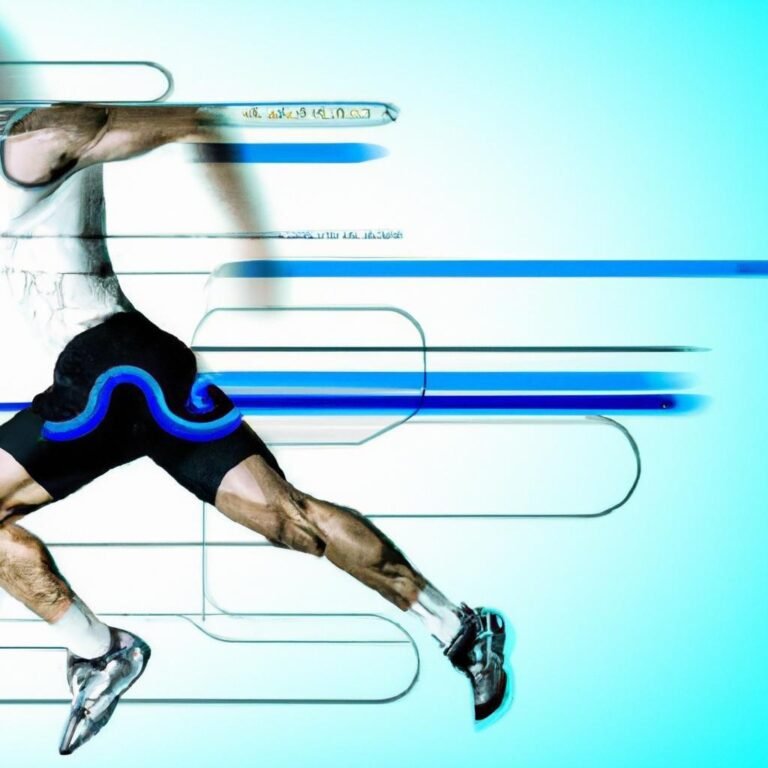Title:
In the rapidly evolving world of sports, where every millisecond counts and optimal performance is the ultimate goal, technology has become an essential ally for athletes and coaches alike. Among the innovative solutions making waves in the realm of sports training, artificial intelligence (AI) and robotics stand out as groundbreaking tools that are reshaping how we analyze and enhance athletic performance. Gone are the days of solely relying on subjective observations and simple measurements; today, sophisticated AI algorithms and robotics systems empower sports professionals to dive deep into performance metrics, predict outcomes, and tailor training regimens with unparalleled precision.
This article explores the transformative impact of AI robotics on performance analysis, revealing how these technologies not only enhance training efficiency but also foster a deeper understanding of an athlete’s potential. We’ll uncover real-world examples, discuss the latest advancements, and highlight the ways these innovations are setting new benchmarks in sports. Join us as we delve into the future of athletic training and performance analysis, where the fusion of human skill and machine intelligence paves the way for unparalleled success in the competitive arena.
Table of Contents
- Exploring the Role of AI Robotics in Sports Performance Metrics
- Integrating Wearable Technology for Real-Time Data Analysis
- Enhancing Athlete Feedback through Advanced Robotics
- The Future of Sports Training: Embracing AI-Driven Strategies for Improvement
- Concluding Remarks
Exploring the Role of AI Robotics in Sports Performance Metrics
As technology continues to advance, AI robotics have begun to play a pivotal role in improving sports performance metrics. These intelligent systems can collect and analyze vast amounts of data, enabling coaches and athletes to understand performance nuances that were previously invisible. By integrating AI robotics into training regimens, athletes can benefit from real-time feedback on their movements, identify weaknesses, and target specific areas for improvement. This innovative approach not only enhances training efficiency but also builds a more tailored workout plan, designed to maximize individual performance.
The application of AI robotics in sports analysis includes a variety of tools and techniques that revolutionize how data is interpreted. For example, motion capture systems equipped with AI can track an athlete’s biomechanics, while predictive analytics can forecast performance outcomes based on collected metrics. The key features of this technology can be summarized as:
- Precision Analysis: Detailed movement tracking for precise evaluations.
- Injury Prevention: Identifying patterns that may lead to injuries.
- Customized Training: Data-driven adjustments to training programs.
- Enhanced Decision Making: Insights for strategic game-day decisions.
To further illustrate the impact of AI robotics on performance metrics, the following table highlights the essential metrics commonly analyzed:
| Metric | Description | Importance |
|---|---|---|
| Speed | Rate of motion measured in meters per second. | Crucial for game dynamics and agility. |
| Endurance | Stamina measured through VO2 max. | Determines overall performance sustainability. |
| Technique Efficiency | Assessment of skill execution. | Essential for skill development and refinement. |
Integrating Wearable Technology for Real-Time Data Analysis
Wearable technology has revolutionized the landscape of sports training by enabling athletes and coaches to harness real-time data insights for performance optimization. By donning smart devices such as smartwatches, fitness trackers, and even specialized clothing embedded with sensors, athletes can monitor critical metrics including heart rate, body temperature, and movement patterns. This influx of data not only informs training decisions but also enhances recovery protocols, leading to a more data-driven approach to athlete well-being. The integration of wearable devices facilitates a seamless feedback loop, allowing immediate adjustments to training regimens based on individual performances, thereby maximizing results and minimizing the risk of injuries.
To visualize the impact of these advancements, consider the following comparative analysis of traditional performance assessment versus wearables:
| Assessment Method | Traditional Methods | Wearable Technology |
|---|---|---|
| Data Collection | Manual recording | Automated real-time tracking |
| Response Time | Delayed feedback | Instant notifications |
| Data Granularity | Basic averages | In-depth analytics |
| Accessibility | Limited availability | Always on-time data |
The combination of AI and wearable technology is proof of a new era in sports training, opening the door to predictive performance analytics and personalized coaching methods that cater to the needs of each athlete. As systems become more sophisticated, the ability to leverage machine learning algorithms alongside real-time data signals a shift towards a future where sports strategies are intricately tailored, allowing athletes to perform at their peak while mitigating injury risks. This evolution not only shapes training methodologies, but also redefines competitive advantage within the realm of sports.
Enhancing Athlete Feedback through Advanced Robotics
In the competitive realm of sports, timely and precise feedback is vital for athletes to refine their skills and maximize their performance. Advanced robotics enhances this feedback loop by integrating real-time data analysis into training regimens. These sophisticated machines utilize a variety of sensors and machine learning algorithms to capture and analyze critical performance metrics, empowering coaches and athletes alike to make informed decisions based on accurate assessments. Some of the key advantages of this technology include:
- Precise Data Collection: Robotics can track minutiae of movement, allowing for detailed breakdowns of an athlete’s posture, speed, and biomechanics.
- Immediate Feedback: Athletes receive instant notifications about their performance, enabling them to implement changes on the fly.
- Personalized Training Programs: Data-driven insights enable the creation of tailor-made training plans that cater to an athlete’s specific strengths and weaknesses.
Moreover, robotics systems provide visual feedback through augmented reality (AR) enhancements, allowing athletes to observe their performance in a more immersive manner. By interacting with their digital models, athletes gain a clearer understanding of their movements, facilitating a deeper level of talent development. For a practical illustration, consider the following table that highlights the metrics captured by robotic systems:
| Metric | Benefit |
|---|---|
| Acceleration | Improves speed training by identifying key acceleration phases. |
| Angle of Joint Flexion | Enhances technique through better understanding of joint movements. |
| Reaction Time | Critical for performance in sports where quick responses are paramount. |
The Future of Sports Training: Embracing AI-Driven Strategies for Improvement
The integration of AI-driven strategies into sports training is revolutionizing how athletes analyze and enhance their performance. AI robotics offer sophisticated methods for tracking progress and pinpointing areas for development, providing insights that were previously unattainable. By utilizing advanced algorithms and machine learning, these systems can process vast amounts of data in real-time, delivering tailored recommendations that cater to individual athletes’ needs. Key benefits of adopting AI in sports training include:
- Precision in Data Analysis: AI can identify subtle performance trends, allowing coaches to make informed decisions.
- Customized Training Regimens: Based on performance metrics, AI systems can create personalized workout plans that maximize efficiency and effectiveness.
- Injury Prevention: By analyzing biomechanics, AI can signal early warnings signs, helping to mitigate the risk of injuries.
As sports organizations embrace these technologies, the distinction between human and machine collaboration begins to blur, leading to a synergistic relationship that enhances overall athletic performance. Coaches and athletes can leverage AI-powered analytics tools to simulate game scenarios and conduct virtual reality training sessions, which provide a rich environment for skill development. To illustrate the impact these advancements have on performance analysis, consider the following table showcasing the typical metrics monitored by AI in sports training:
| Metric | Description | Impact on Performance |
|---|---|---|
| Heart Rate Variability | Measures stress and recovery levels | Optimizes training intensity |
| Movement Patterns | Tracks speed and agility | Enhances technique and efficiency |
| Video Analysis | Assesses form and technique | Facilitates real-time feedback |
Concluding Remarks
the integration of AI robotics into sports training and performance analysis is not merely a trend; it’s a transformative evolution that is reshaping the landscape of athletic preparation and competition. By harnessing advanced algorithms and cutting-edge robotic systems, coaches and athletes can gain unparalleled insights into performance metrics, enabling them to fine-tune techniques, optimize training regimens, and ultimately elevate their game to new heights.
As technology continues to advance, the potential applications of AI robotics in sports will only expand, offering exciting opportunities for innovation in training methodologies and athlete development. The future of sports training is not just about physical prowess; it’s about a data-driven approach that combines human intuition with machine precision.
For athletes and coaches willing to embrace these tools, the benefits are clear: enhanced performance, reduced injury rates, and a more strategic approach to competition. Let us stay open to the possibilities that AI and robotics present, as they promise to unlock the full potential of athletes across all levels.
So, as we move forward, let’s keep our eyes on the horizon and embrace the exciting advancements in AI and robotics that are set to redefine what’s possible in the world of sports. Thank you for joining us on this journey into the future of training; we can’t wait to see how these innovations will inspire the next generation of champions.





